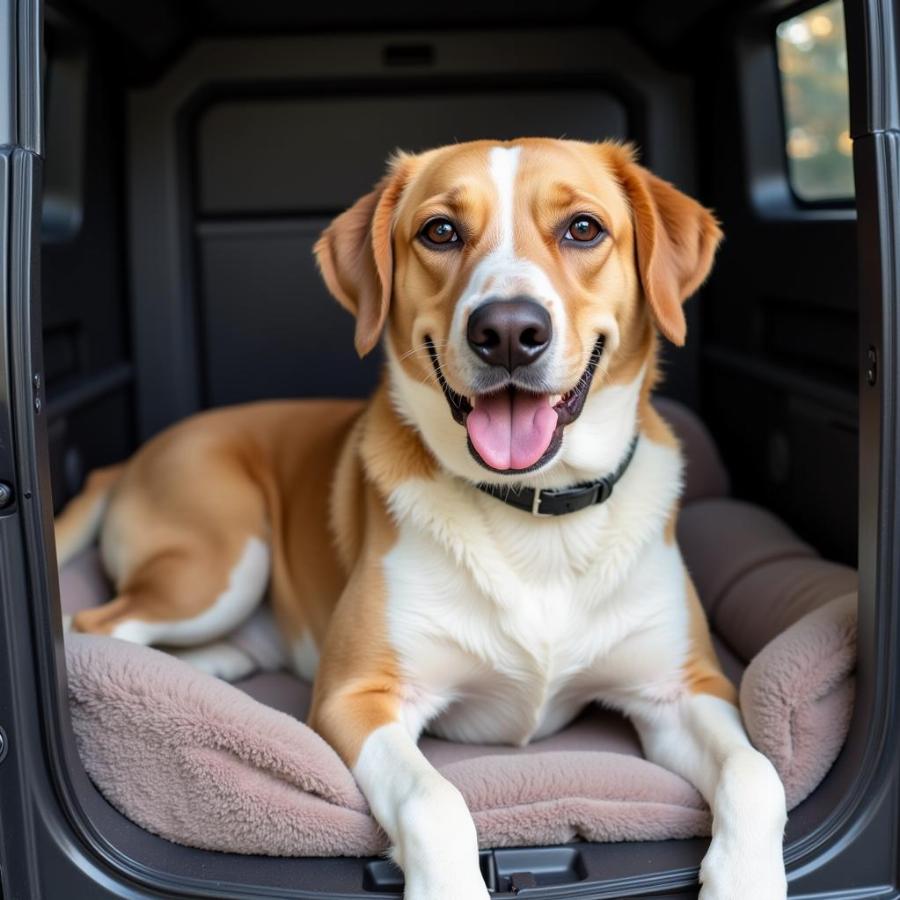A dog crate can be a wonderful tool for both you and your furry friend, offering a safe haven, aiding in housetraining, and providing a secure space for travel. Finding the right “you and me dog crate” involves understanding your dog’s needs, your lifestyle, and the various crate options available. Let’s explore the key factors to consider when choosing the perfect crate to ensure a positive experience for everyone.
Understanding the “You and Me” Aspect of Crate Training
Choosing a dog crate isn’t just about picking a size; it’s about fostering a positive association with the crate. The phrase “you and me dog crate” highlights the bond between owner and pet. It suggests a shared space where your dog feels comfortable and secure, not isolated or punished. This positive association is crucial for successful crate training and your dog’s overall well-being. It’s about building trust and making the crate a positive part of your dog’s life.
Size Matters: Finding the Right Fit for Your Dog
Selecting the correct crate size is paramount. A crate that’s too small will be cramped and uncomfortable, while one that’s too large can defeat the purpose of housetraining. The ideal crate allows your dog to stand comfortably, turn around, and lie down without feeling restricted. Measure your dog’s length from nose to tail and height from the floor to the top of their head while standing. Add a few inches to each measurement to determine the appropriate crate dimensions.
Different Crate Types: Which One Suits Your Lifestyle?
There’s a variety of dog crates available, each with its own pros and cons. Consider your lifestyle and your dog’s personality when making your selection.
Wire Crates: Excellent Ventilation and Visibility
Wire crates offer excellent ventilation and visibility, allowing your dog to see their surroundings and feel less confined. They are easy to clean and come in a range of sizes, making them suitable for most breeds.
Plastic Crates: Ideal for Travel and Anxious Dogs
Plastic crates provide a more den-like environment, which can be comforting for anxious dogs. They are also more durable and secure, making them a good choice for travel.
Soft-Sided Crates: Lightweight and Portable
Soft-sided crates are lightweight and portable, making them convenient for travel and outdoor activities. However, they are less durable than wire or plastic crates and not suitable for dogs who chew.
Creating a Comfortable Crate Environment
Making the crate a comfortable and inviting space is essential for successful crate training. Add a soft, washable pads for dog crates or blanket, and consider including a few safe toys. Avoid overcrowding the crate with too many items, as this can make it feel cluttered and less appealing.
What about an Entertainment Center Dog Crate?
If you’re looking for a crate that seamlessly blends with your home decor, consider an entertainment center dog crate. These crates are designed to look like furniture, providing a stylish and functional solution.
Common Crate Training Challenges and Solutions
Many dog owners encounter challenges during crate training. Patience and consistency are key to overcoming these hurdles.
My Dog Whines in the Crate: What Should I Do?
Whining is a common sign of anxiety or discomfort. Ensure your dog has been properly exercised and has access to water. Avoid letting your dog out of the crate while they are whining, as this can reinforce the behavior.
My Dog Eliminates in the Crate: What’s Wrong?
Accidents in the crate can indicate that the crate is too large or that your dog needs more frequent potty breaks. Ensure you’re taking your dog out regularly, especially after waking up and after meals. A bottom tray for dog cage or a dog kennel replacement tray can make cleaning up accidents easier.
 Happy Dog in Crate
Happy Dog in Crate
Conclusion: Building a Positive Crate Experience
Choosing the right “you and me dog crate” involves careful consideration of your dog’s needs, your lifestyle, and the available crate options. By creating a positive association with the crate and addressing any challenges with patience and consistency, you can provide your furry friend with a safe, comfortable, and secure space they’ll love.
FAQ
- How long can I leave my dog in a crate? This depends on your dog’s age and individual needs. Puppies generally require more frequent breaks than adult dogs.
- Can I use the crate as punishment? No, the crate should never be used as punishment. It should be a positive and safe space for your dog.
- What if my dog is afraid of the crate? Introduce the crate gradually and use positive reinforcement to build a positive association.
- How do I clean a dog crate? Most crates can be cleaned with soap and water. Be sure to disinfect the crate regularly.
- What size crate should I get for my puppy? Choose a crate that is appropriately sized for your puppy’s current size, but consider their projected adult size as well.
- Can I put a blanket in my dog’s crate? Yes, a soft, washable blanket can make the crate more comfortable.
- What are the benefits of crate training? Crate training can aid in housetraining, provide a safe space for your dog, and make travel easier.
Other Questions to Consider
- What are the best dog crate accessories?
- How can I make my dog’s crate more comfortable?
- What are the different types of dog crate training methods?
Beaut Dogs is your go-to resource for all things dog-related, offering reliable, helpful, and in-depth information about the canine world. Visit https://beautdogs.com today to discover more about different dog breeds, care tips, training advice, and much more. When you need expert guidance, contact us via Email at [email protected] for detailed and accurate answers from Beaut Dogs. We’re here to help you navigate the wonderful world of dog ownership!